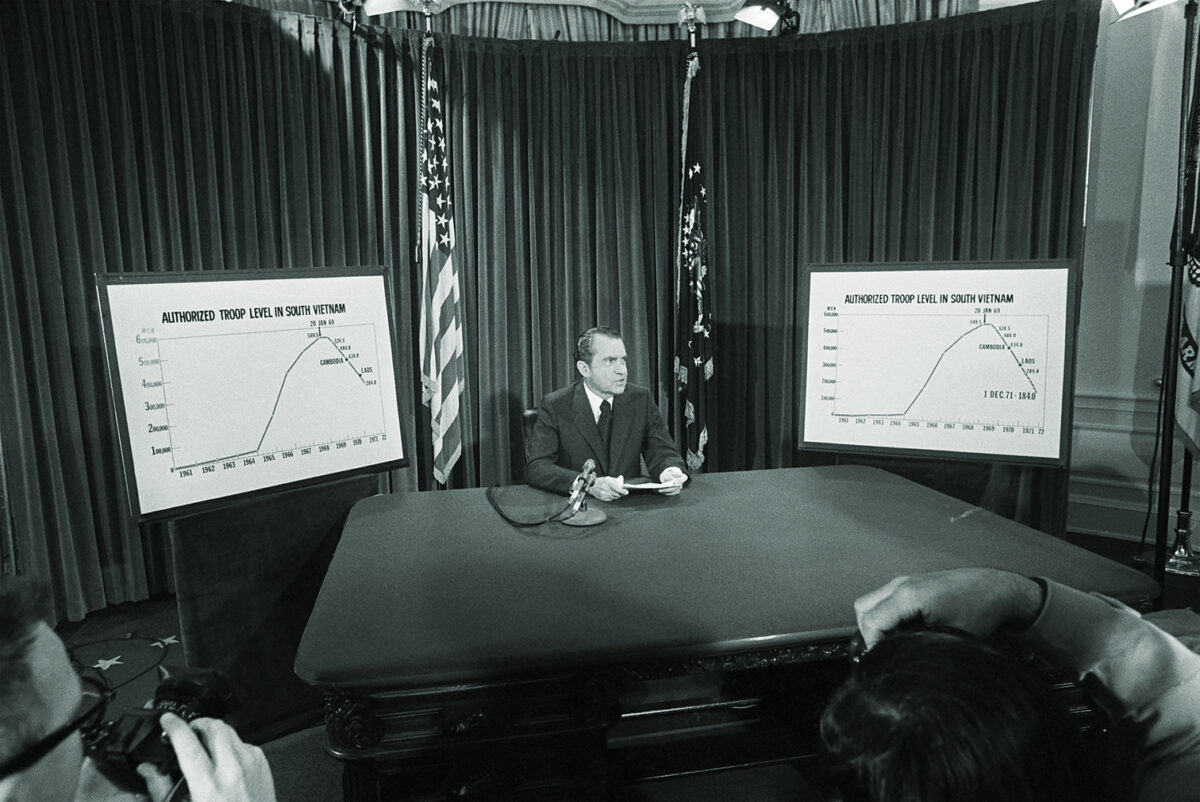On June 8, 1969, U.S. President Richard Nixon and Republic of Vietnam (RVN) President Nguyen Van Thieu stood side-by-side at Midway Island and formally launched Vietnamization. The goal was to allow U.S. operational combat forces to depart South Vietnam as quickly as possible before the next U.S. presidential election, leaving South Vietnam able to defend itself. Seven months after this announcement, I arrived in Cam Ranh Bay as a replacement headed for the U.S. Army’s 1st Signal Brigade. I was about to have a front row seat on Vietnamization in practice as a quality assurance NCO. Communication technology is an essential combat support function, which Gen. Creighton Abrams, U.S. commander in South Vietnam, had identified from the beginning as critical if South Vietnam’s Armed Forces were to defend their country on their own.
The short time projected for Vietnamization was inadequate for the South to build an effective national defense force with sufficient training to wage modern warfare effectively. Such a project can require years—especially when the local government’s social, economic, and political foundations have been stunted by a century of colonialism and nearly two decades of violent internal turmoil. From my vantage point in South Vietnam throughout most of 1970, these obstacles to rapid Vietnamization appeared insurmountable.
Insurmountable Obstacles
I reported for induction on Oct. 14, 1968, went through basic training at Fort Bliss, Texas, and received orders for advanced training at the Electronic Warfare School at Fort Huachuca, Ariz. Completing the high frequency radio operator course (MOS 05B) in five weeks, I remained at Fort Huachuca as an instructor. With controversy over the war growing, the Army was having trouble getting junior NCOs to reenlist. Instructors were needed. On Nov. 14, 1969, after only 13 months in service, I was promoted to Sergeant E-5. Near the end of November, the training company’s first sergeant called me into the orderly room, looked across his desk, and said, “Congratulations, Sgt. Anderson, you’re going to Vietnam.”
I landed at Cam Ranh Bay on Jan. 6, 1970, with orders to report to Company C, 43rd Signal Battalion at An Khe in the Central Highlands. The 1st Signal Brigade’s clerk at the 22nd Replacement Battalion, a buck sergeant like me, modified the original orders. I literally went up the hill from the replacement center to the 361st Signal Battalion. I could not believe my luck. Cam Ranh was a large and secure combat base. In the evenings off duty, we wore civilian clothes, and there were a lot of creature comforts with barracks, hot showers, mess halls, snack bars, clubs, a big PX, and a beach just over the hill.
There was a problem, however. My MOS was 05B4H: high frequency radio operator, NCO, instructor. My personnel folder also listed college graduate, high-speed code intercept operator, French linguist (based upon Army testing and six semesters of college French), and a secret-cryptology clearance from my work at Fort Huachuca. The 361st operated tropospheric scatter microwave facilities, and the Table of Organization and Equipment (TOE) of this high technology installation that could transmit almost 200 miles did not include any slots for high-frequency radio operators.
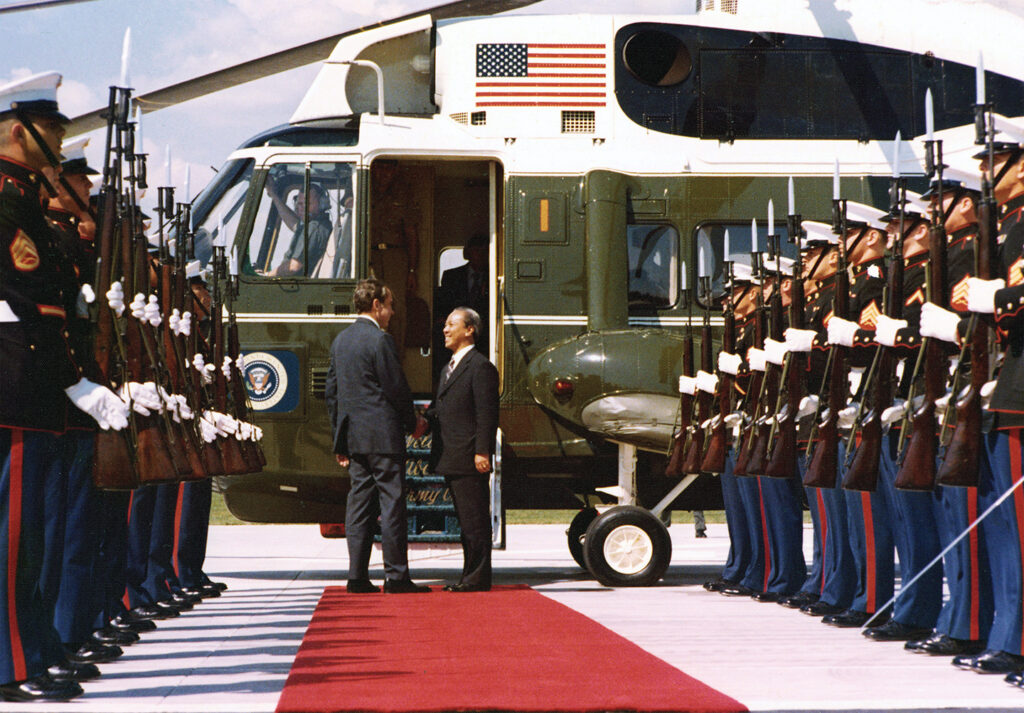
The operations sergeant was on his third straight tour in Vietnam, all at the same job. We called him “Grandpa” behind his back, which was a term of respect because it sure looked like he ran the whole battalion. I knew virtually nothing about tropospheric scatter communication, but Grandpa was pleased to have me, mainly because I was a college graduate who could type and compose a complete sentence. I soon discovered that everyone in the office except the sarge were college graduates. He immediately put me to work as the author of various monthly and quarterly reports but soon realized that I had a more valuable skill—French language ability.
Vietnamization had created an urgent need for a linguist. The operations officer was a signal corps major with an ARVN signal captain as a counterpart. The ARVN officer was in the battalion to learn to manage this integrated wideband communication site. The American officer had studied Portuguese at West Point and didn’t know any Vietnamese. The South Vietnamese captain spoke French but little English. With no training as an interpreter and only basic conversational French, it became my job to help the two officers communicate.
In the 361st Signal Battalion, Vietnamization in 1970 hinged on an American officer mentoring an ARVN officer to take command of a highly technical facility through the hand gestures and college French of a sergeant whose expertise was tactical, not long-range communication, and whose French was better suited to translating Molière than to conveying military technology. The mentoring process was slow and not, I am sure, what Washington envisioned Vietnamization to be. As bad as the situation was for efforts to Vietnamize the 361st Signal Battalion across a serious language divide, the ad hoc process received a further setback with my sudden transfer out with no apparent way to bridge the language gap. The commander of the 1st Signal Brigade later acknowledged in his lessons-learned study that the language barrier hampered training.
A Daunting Task
Brigade headquarters at Long Binh refused to issue permanent orders assigning me to the 361st because my MOS was not authorized for that type of unit. It transferred me to 12th Signal Group at Phu Bai for assignment somewhere in I Corps, the five northern provinces of the Republic of Vietnam. On Feb. 9, I got off a C-130 at Phu Bai airport. I waited in the transient hooch at Headquarters, Headquarters Detachment, 12th Signal Group with my duffle bag packed. I could be off to any of the radio telephone/teletype sites the brigade operated in support of the 101st Airborne Division (Airmobile); 1st Brigade, 5th Infantry Division (Mechanized); III Marine Amphibious Force (MAF); 1st ARVN Division; 2nd ARVN Division; or Republic of Korea Marine Brigade. I could expect to spend the next seven months at a division or battalion headquarters, if I was lucky, or a small remote site if I was less fortunate.
As it turned out, I soon learned that I was going to be the group’s quality assurance NCO in charge of a small team of three or four currently being assembled. Col. D.W. Ogden Jr., the group commander, had created the team and its “communication evaluation” mission because, I was told, he was tired of complaints from the combat commanders (termed “customers”) about the quality of signal support from 1st Signal Brigade. The combat commands had their own signal assets, but depended on the 12th Signal Group to link their tactical networks to others in the corps tactical zone and from there to the Integrated Communication System [ICS], Southeast Asia and to worldwide networks operated by the Strategic Communications Command at Fort Huachuca. The technology of this vast system—sometimes referred to as the AT&T of Southeast Asia—was powerful. Through tropospheric scatter, line-of-sight microwave, cable, and other electronic assets, a commander could connect securely by voice, teletype, or data from a combat bunker to anywhere in the world as long as 1st Signal Brigade units in the field kept the complex system up and working.
It was a daunting task for well-educated and thoroughly trained signal soldiers with access to reliable equipment. Would the ARVN be able to manage this critical military infrastructure on its own, especially in the short time that Washington had allowed to accomplish Vietnamization? A new brigade regulation had created Buddies Together (Cung Than-Thien) to train Republic of Vietnam Armed Forces signalmen in highly technical communications skills. Units like ours were also expected to conduct surveys by special teams in each corps tactical zone to determine where American operators could turn over equipment and operations to the South Vietnamese.
My team consisted of an electric generator mechanic (another sergeant), a radio operator (one of my students at Fort Huachuca), and a draftsman. The latter two were SP4s and served as drivers or guards or were assigned other tasks. We usually traveled with the group’s engineering officer and the sergeant major from his office. The colonel had wanted a sergeant first class (E-7) to be the NCO, but senior NCOs were in short supply. He settled for me because of my education and instructor experience, and my rank was at least a hard stripe NCO. There were fewer than 10 E-5 and E-6 NCOs in the group headquarters. The team’s sergeant major (E-9) traveled with us primarily to back me up if the issues at the site turned out to be related to command or personnel problems.
Inexperienced Operations
The U.S. Army history of military communications in Vietnam describes the urgency of the task at hand. The recently completed Automatic Digital Network (AUTODIN) could transmit an average of 1,500 words per minute, but the tactical teletype circuits to which it was connected passed traffic at 60 to 100 words per minute. Signal operators experienced continuous maintenance problems with their overextended machines. In the summer of 1970, the Da Nang tape relay received 20 flash messages (highest precedence) in a 20-minute period from the AUTODIN. This signal company had to relay these messages to the tactical units on its circuits at 100 words per minute, which required about 20 minutes per message. This volume of traffic overheated the recipients’ equipment, requiring transmission to be slowed to 60 words per minute. As the official history records, “Besides such technical problems, tactical operators lacking special training on the operation of the new Automatic Digital Network were bewildered by its formats and procedures. The 1st Signal Brigade had to keep troubleshooting teams constantly on the road to help inexperienced operators.”
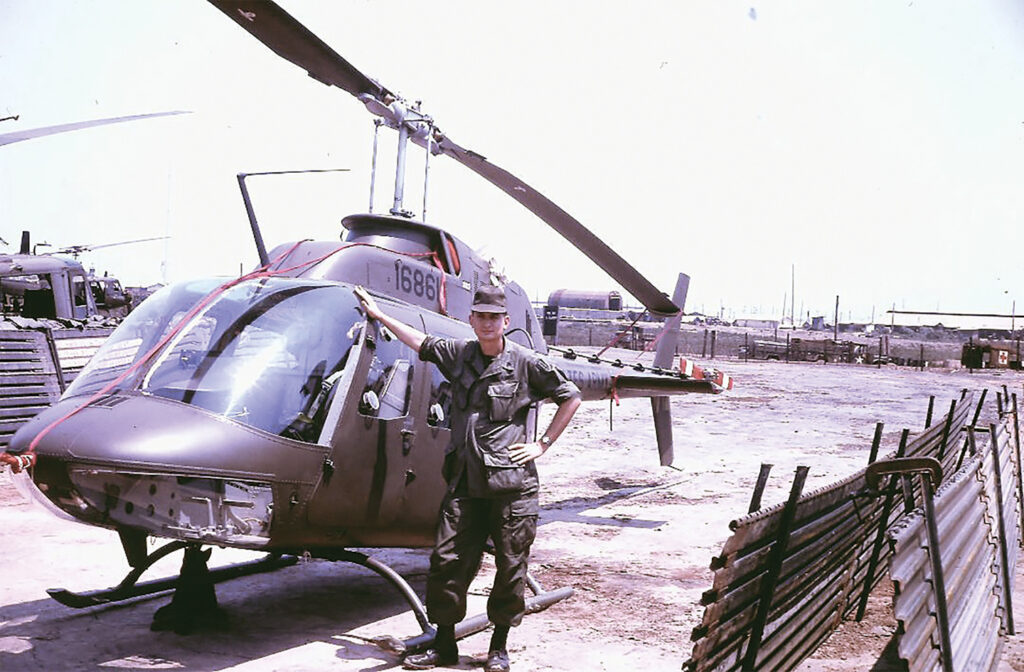
The group’s Operational Report-Lessons Learned (ORLL) for July and October 1970 recorded major emphasis on improved communications through quality assurance inspections. Working seven days a week, we were responsible for maintaining the efficient and effective performance of installations operated by 17 units in 5 provinces. The QA team conducted 57 site inspections in six months to improve equipment maintenance, operator efficiency, site operating procedures, and customer satisfaction. According to the ORLLs, “Partly due to the effort of the Quality Assurance team the high standards of customer service provided by units of the 12th Signal Group were maintained or bettered.”
The smallest detail could become significant when dealing with modern electronics. In northern I Corps the soil was red clay (red mud in the rainy season and red dust other times), which made it extremely difficult to establish a working electrical ground for the system. In some cases, poor signal quality or even interrupted transmission was owing to where and how deep the metal grounding rods were installed. Without this basic setup at a tactical location, all the immense technical power to connect the corps level and global system was of no use. It was a variation on the “for want of a nail” adage. In this case, for want of a ground, the message was lost; for want of a message, the battle was lost.
My job took me to signal sites from the DMZ southward to the Batangan Peninsula. Traveling usually by UH-1 Huey helicopters, we went to Camp Carroll (the 1st ARVN Division’s forward command post just south of the DMZ), Quang Tri, Dong Ha, Tan My, Hai Van Pass, Da Nang, Hoi An, Tam Ky, Chu Lai, Duc Pho, and Quang Ngai. Our work also included small fire bases and landing zones: Hawk Hill (5 miles northwest of Tam Ky), LZ Sharon (between Quang Tri and Dong Ha), and FB Birmingham (southwest of Camp Eagle, headquarters of the 101st Airborne, about 5 miles from Phu Bai). We went by road to sites in Phu Bai, Hue, and Camp Eagle.
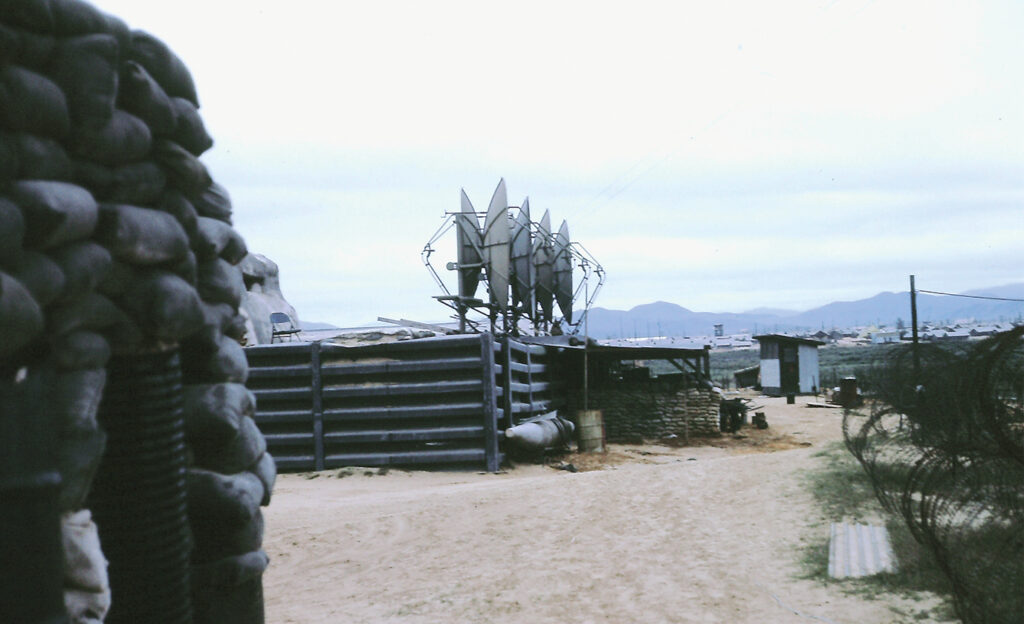
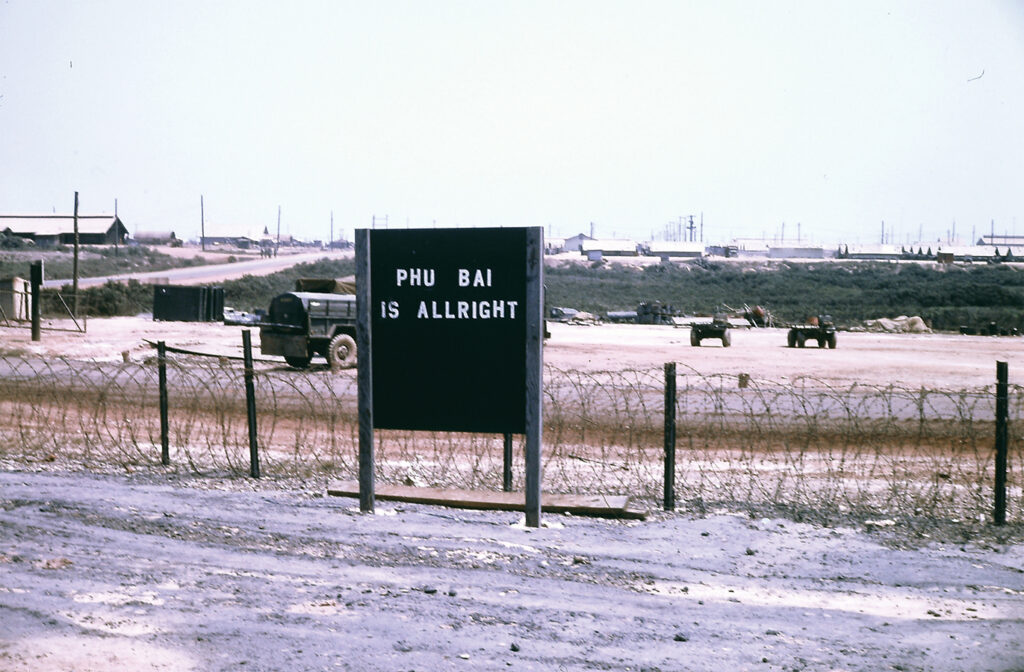
We tried to get into and out of a site (especially remote ones) in one day without having to stay overnight. On one occasion, because helicopters were unavailable and a signal problem at III MAF needed urgent attention, I went from Phu Bai to Da Nang in an open jeep along Route 1 over Hai Van Pass with only one other soldier to ride shotgun. That we could make that drive at all indicated that by 1970 the level of enemy activity along this key road had declined significantly. My sense was that the enemy was not deterred by the growing size of the ARVN but was waiting for U.S. troop withdrawals to continue. Unknown to me was the CIA’s Special National Intelligence Estimate of Feb. 5 that “Hanoi may be waiting until more US units have departed, in the expectation that this will provide better opportunities with lesser risks, and that Communist forces will be better prepared to strike.”
Phu Bai was a large and relatively secure base. It was not Cam Ranh Bay, but there was a sign at the front gate proclaiming, “Phu Bai is Allright.” It received periodic mortar and rocket bombardment, especially aimed at runways, helipads, and signal towers. Signalmen are soldier-communicators who provide specialized skills and defend their installations against enemy attack. Our detachment had responsibility for about five perimeter bunkers and had a quick reaction team in the event of an assault on the base. With the shortage of junior NCOs in the detachment, I drew the duty as sergeant of the guard, reserve force NCO, or staff duty NCO at least one night a week.
Vietnamization
Most nights were uneventful, but occasionally I was NCOIC during probes of the perimeter or other imminent threats. One occurred during my last month in Vietnam. Perhaps Charlie knew I was short, because enemy bombardments and ground probes of Camp Eagle, nearby Camp Evans, and Phu Bai increased markedly in July and August 1970. Actually, the enemy was testing the progress of Vietnamization and not targeting me specifically.
There were ARVN troops at many of our bases, but most of them provided perimeter security, manned artillery pieces, or handled supplies—not operating signal equipment. Similar to what I had witnessed at the 361st Signal Battalion, there were a few ARVN officers and NCOs shadowing American counterparts, but I observed little interaction or hands-on communication activity by Vietnamese.
Aware of Vietnamization goals, I wrote to my parents: “The Vietnamization program is really going on in earnest over here.… Even 12th Sig. Gp. is getting in on the ARVN training program. We have about 20 ARVN at various sites in the Group receiving on-the-job training on a buddy system basis.” In retrospect, my estimate of 20 ARVN signalmen over a five-province area suggests that the number being trained was woefully small. With the exception of Camp Carroll, an ARVN command post, I seldom heard Vietnamese spoken at signal facilities.
An exception came when my team worked at a line-of-sight microwave installation near Chu Lai. A group of American military and civilian officials appeared. There were ARVN signal soldiers at the site. A high-ranking U.S. officer asked the American signal officer escorting them how long it would be before the Vietnamese would be ready to assume operation of this station on their own. After a long pause, he reasonably estimated about eight years. Enlisted ARVN signalmen had an approximately sixth-grade education. It required two years or more of hands-on experience for American soldiers with high school diplomas to develop the technical knowledge and problem-solving skills needed for this military occupation. The Nixon administration’s timetable for Vietnamization and turning over the defense of the RVN to its own military was measured in months—not years.
Lt. Gen. Walter Kerwin, a senior U.S. adviser, had estimated in 1969 that it would take five years for the ARVN to be self-sufficient. Washington’s goal was to have Vietnamization completed by January 1973. My former unit, the 361st Signal Battalion, had been designated as a test of 1st Signal Brigade’s buddy effort to turn over the fixed communication system to the South Vietnamese Signal Directorate. That initiative explains the presence of the ARVN captain in the battalion S-3 while I was there. That unit’s 1969 ORLLs assessed that South Vietnam’s armed forces lacked the “broad scientific and technical education base…to allow takeover of the ICS in [a] short time frame.” This study projected a minimum of four years for the South Vietnamese to take control and more realistically eight to 10 years.
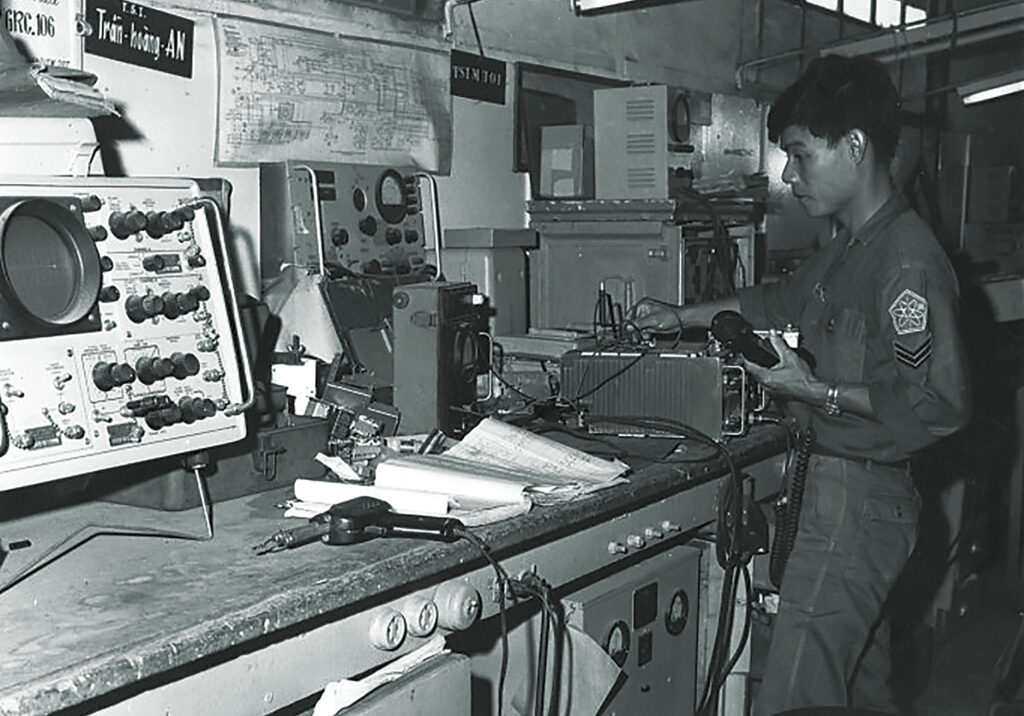
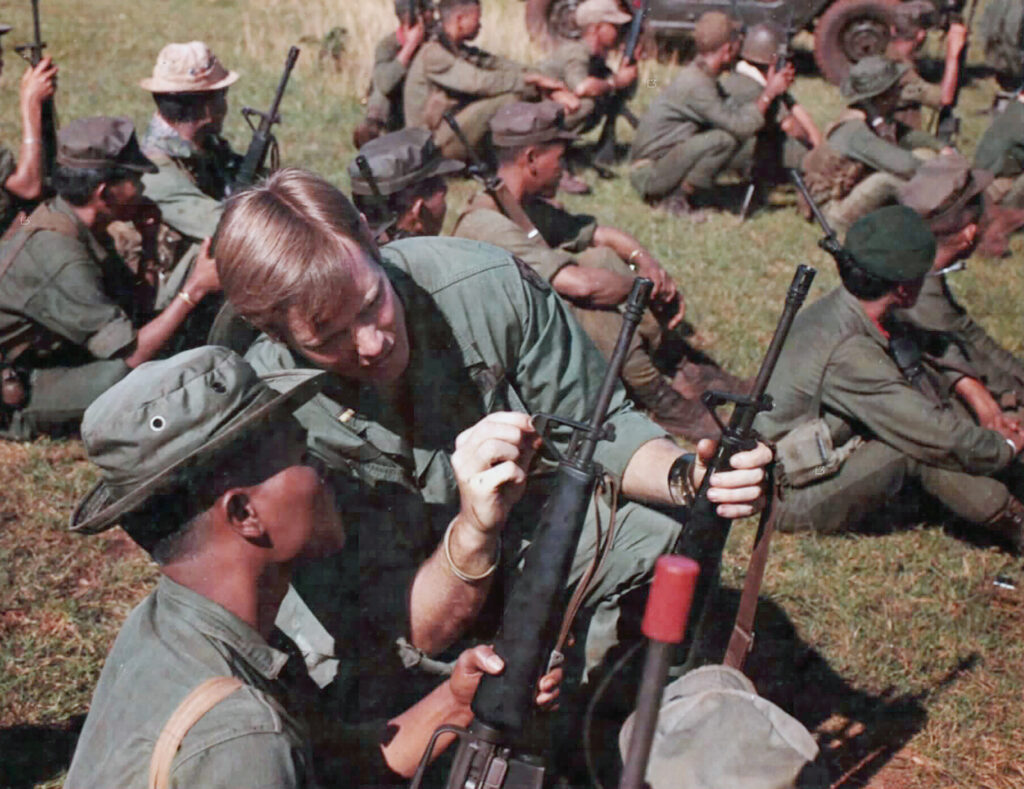
As my return to the United States neared, entire U.S. combat units were leaving the RVN. The 1st Signal Brigade’s primary mission of support for U.S. forces was narrowing. Gen. Abrams had wanted to keep a residual U.S. combat support element to bolster Vietnamization, but the Pentagon mandated sweeping reductions.
I left Vietnam on Sept. 8, after 1 year, 10 months, and 26 days active duty and 8 months and 5 days in Vietnam. The 12th Signal Group soon afterward relocated to Da Nang, as U.S. commanders consolidated their remaining strength and transferred their signal assets to the ARVN. American aid paid private contractors to operate the network as a stopgap to meet the South’s military communication requirements, but the days were almost gone when the U.S. Congress and public would pay the bill.
In my two assignments as an impromptu interpreter and as a quality assurance NCO, I experienced some of the problems with Vietnamization. Studies of combat support at the time and soon after the war frequently referenced what I personally witnessed—limitations on the effectiveness of Vietnamization because of language hurdles and lack of expertise on the part of the South Vietnamese to support modern combat operations. In an otherwise upbeat report on Vietnamization at the end of 1969, Secretary of Defense Melvin Laird singled out the challenge posed by specialized training as a “serious concern.” “More English language instructors and more trained technicians to man military and civil communications systems are required,” he admitted. He added that there “were simply not enough qualified persons in the Vietnamese manpower pool to fill all the demands for technical skills.”
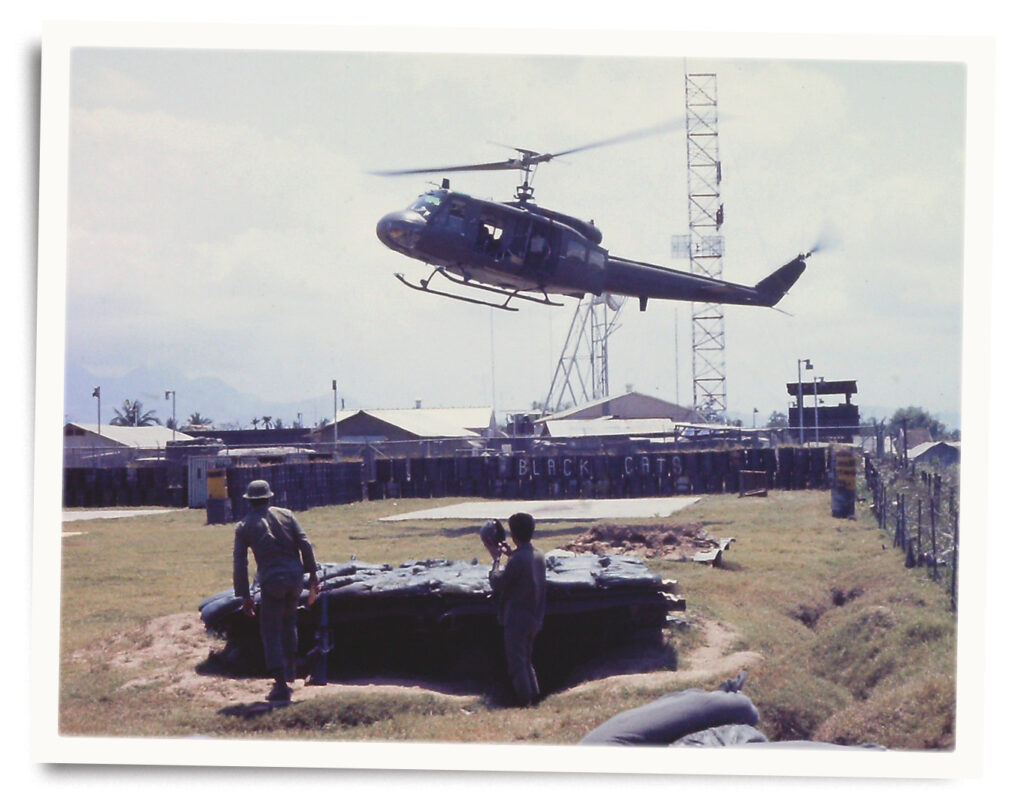
The bravery of the ARVN soldiers and their ability to shoot straight were necessary but not sufficient for battlefield success, as Gen. Abrams had perceived when first receiving his marching orders from Washington. As a nation-state, the Republic of Vietnam had major structural weaknesses to overcome before it could field a modern military establishment.
Anderson went directly from Vietnam in September 1970 to a classroom at the University of Virginia, where he later received a Ph.D. in history. After 45 years of teaching American foreign policy, he is now professor of history emeritus at California State University, Monterey Bay, and a former senior lecturer of national security affairs at the Naval Postgraduate School. His twelfth book was Vietnamization: Politics, Strategy, Legacy, published in 2019 by Rowman and Littlefield.
This story appeared in the 2023 Autumn issue of Vietnam magazine.
historynet magazines
Our 9 best-selling history titles feature in-depth storytelling and iconic imagery to engage and inform on the people, the wars, and the events that shaped America and the world.


